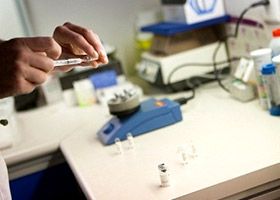Medical expert of the article
New publications
Icenko-Cushing's Disease - Information Overview
Last reviewed: 12.07.2025

All iLive content is medically reviewed or fact checked to ensure as much factual accuracy as possible.
We have strict sourcing guidelines and only link to reputable media sites, academic research institutions and, whenever possible, medically peer reviewed studies. Note that the numbers in parentheses ([1], [2], etc.) are clickable links to these studies.
If you feel that any of our content is inaccurate, out-of-date, or otherwise questionable, please select it and press Ctrl + Enter.

Itsenko-Cushing's disease is one of the severe neuroendocrine diseases, the pathogenesis of which is based on the violation of regulatory mechanisms that control the hypothalamic-pituitary-adrenal system. The disease most often develops at the age of 20 to 40 years, but also occurs in children and people over 50 years old. Women get sick 5 times more often than men.
The disease was named after the scientists. In 1924, Soviet neurologist N. M. Itsenko from Voronezh reported two patients with damage to the interstitial-pituitary region. American surgeon Harvey Cushing in 1932 described a clinical syndrome called "pituitary basophilism".
Itsenko-Cushing's disease should be distinguished from Itsenko-Cushing's syndrome. The latter term is used in cases of adrenal tumor (benign or malignant) or ectopic tumor of various organs (bronchi, thymus, pancreas, liver).
Causes and pathogenesis
The causes of the disease have not been established. In women, Itsenko-Cushing's disease most often occurs after childbirth. The anamnesis of patients of both sexes includes head injuries, concussion, skull injuries, encephalitis, arachnoiditis and other CNS lesions.
The pathogenetic basis of Itsenko-Cushing's disease is a change in the mechanism of control of ACTH secretion. Due to a decrease in dopamine activity responsible for the inhibitory effect on the secretion of CRH and ACTH and an increase in the tone of the serotonergic system, the mechanism of regulation of the hypothalamic-pituitary-adrenal system and the daily rhythm of CRH-ACTH-cortisol secretion are disrupted; the principle of "feedback" with a simultaneous increase in the level of ACTH and cortisol ceases to operate; the reaction to stress disappears - an increase in cortisol under the influence of insulin hypoglycemia.
Symptoms of Itsenko-Cushing's disease
The skin of patients is thin, dry, and purple-cyanotic on the face, chest, and back. The venous pattern on the chest and limbs is clearly visible. Acrocyanosis is observed. Wide red-violet striae appear on the skin of the abdomen, inner shoulders, thighs, and in the area of the mammary glands. Hyperpigmentation of the skin is often observed, most often in areas of friction. Pustular rashes and hypertrichosis appear on the back, chest, and face. Hair on the head often falls out, and baldness in women is noted according to the male pattern. There is an increased tendency to furunculosis and the development of erysipelas.
There is excessive fat deposition in the neck, trunk, abdomen and face, which takes on the appearance of a "full moon". In the area of the upper thoracic vertebrae, there are fat deposits in the form of a hump. The limbs are thin, losing their normal shape.
Diagnosis of Itsenko-Cushing's disease
The diagnosis of Itsenko-Cushing's disease is made on the basis of clinical, radiological and laboratory data.
X-ray examination methods are of great importance in diagnostics. They help to detect skeletal osteoporosis of varying severity (in 95% of patients). The size of the sella turcica can indirectly characterize the morphological state of the pituitary gland, its size. With pituitary microadenomas (about 10% of all cases), the sella increases in size. Microadenomas can be detected by computed tomography and magnetic resonance imaging (60% of cases) and by surgical adenomectomy (90% of cases).
X-ray examinations of the adrenal glands are performed using various methods: oxygen supraradiography, angiography, computed tomography and magnetic resonance imaging. Supraradiography performed under pneumoperitoneum conditions is the most accessible method of visualizing the adrenal glands, but it is often difficult to judge their true enlargement, since they are surrounded by a dense layer of fatty tissue. Angiographic examination of the adrenal glands with simultaneous determination of the hormone content in the blood taken from the adrenal veins provides reliable information about the functional state of these glands. But this invasive method is not always safe for patients with Itsenko-Cushing's disease.
What do need to examine?
How to examine?
What tests are needed?
Who to contact?
Treatment of Itsenko-Cushing's disease
 Pathogenetic and symptomatic methods are used to treat the disease. Pathogenetic methods are aimed at normalizing the pituitary-adrenal relationship, symptomatic methods are aimed at compensating for metabolic disorders.
Pathogenetic and symptomatic methods are used to treat the disease. Pathogenetic methods are aimed at normalizing the pituitary-adrenal relationship, symptomatic methods are aimed at compensating for metabolic disorders.
Normalization of ACTH and cortisol production is achieved by using pituitary irradiation, surgical adenomectomy, or hypothalamic-pituitary system blockers. Some patients have one or both adrenal glands removed and are prescribed inhibitors of hormone biosynthesis in the adrenal cortex. The choice of method depends on the degree of expression and severity of the clinical manifestations of the disease.


 [
[